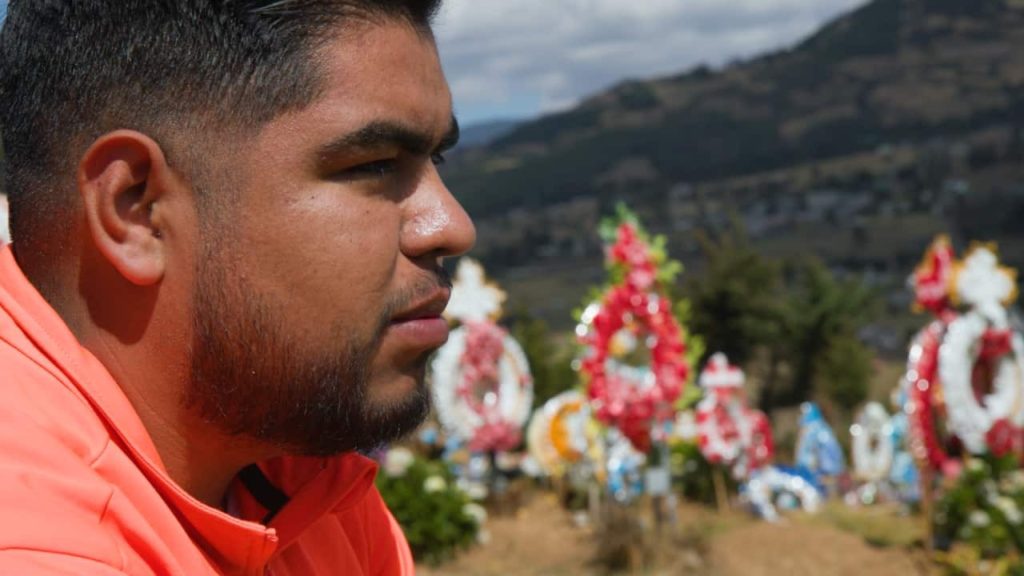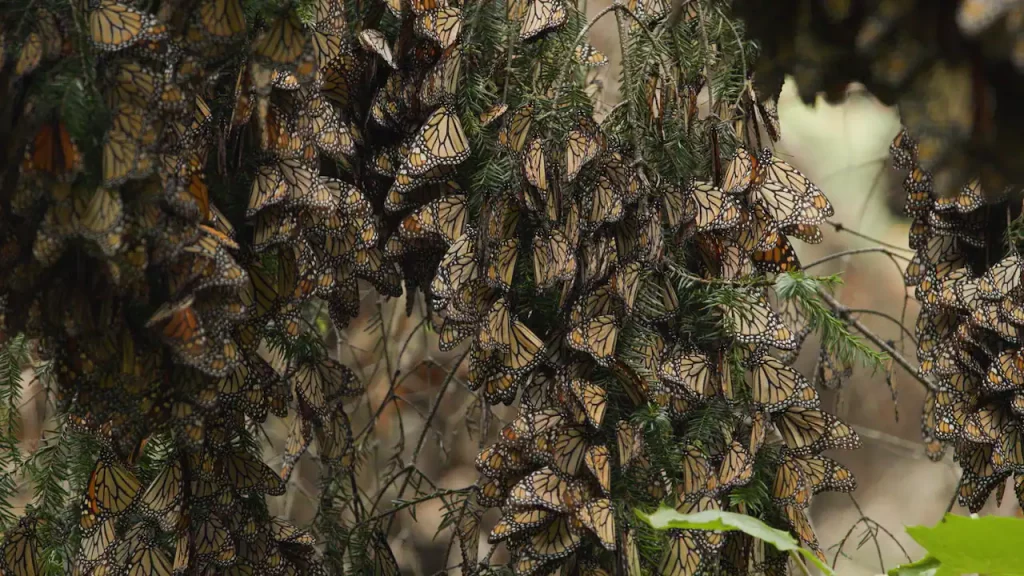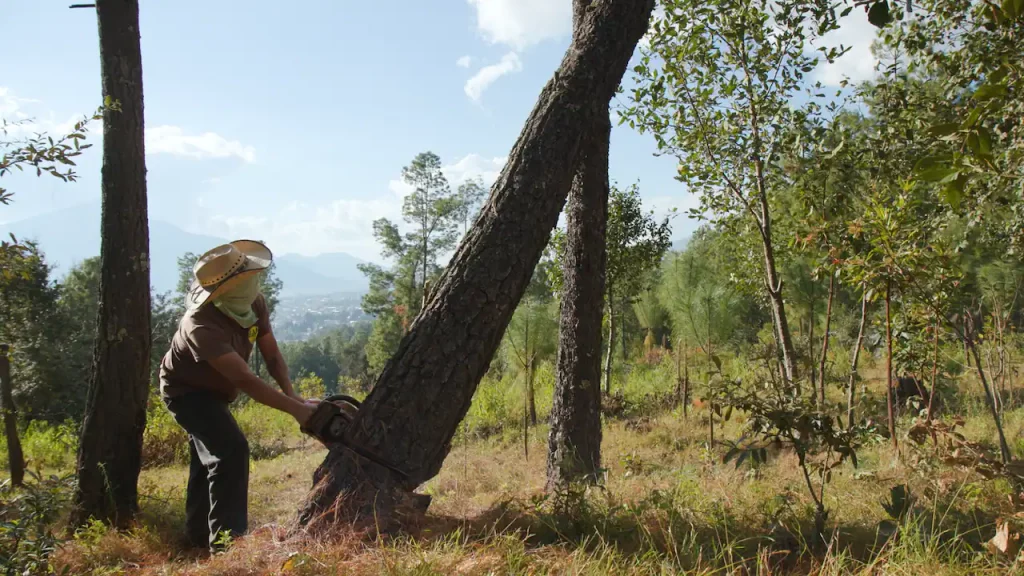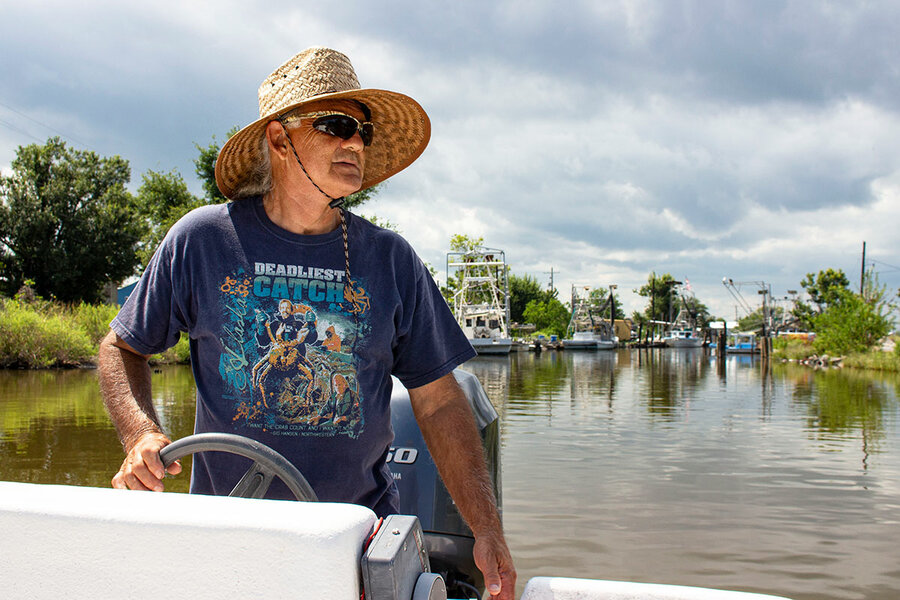Original publication by Calliste Weitenberg for sbs.com.au on 11 April 2022
In the state of Michoacán, Mexico, the fight to protect a natural wonder is colliding with a booming avocado trade and a spiralling war for control being waged by the country’s drug cartels.

On a hillside in Ocampo in north-east Michoacán, Mexico, a large cement tomb stands tall amid hundreds of brightly decorated gravestones.
Inside, a large cross in the form of a monarch butterfly bears the name of Homero Gomez Gonzalez, the butterfly defender.
“My father [was] a role model… everyone here in the community says there won’t be another fighter like him,” says Homero Gomez Valencia, standing before his father’s grave.
Homero Gomez Gonzalez once managed the El Rosario butterfly sanctuary, a mountainous patch of forest with a ‘Goldilocks climate’ (where temperatures are neither too hot, nor too cold) that, once a year, hosts the annual overwintering of North America’s monarch butterfly.
“One of the best memories I have with him were all the times I went to record him in the butterfly sanctuary. He never told me what plans he had or what he was going to say to the camera. I would simply take the camera and he would begin to improvise,” says Homero Jnr.

Intent on spreading awareness of the butterfly’s plight, Homero’s dad would regularly hike to more than 3,000 metres, into the heart of the forest, where millions of monarch butterflies cluster together.
There, standing in a cloud of black and orange wings, he’d make videos for Facebook with his son, encouraging visitors from across the world to come and witness the extraordinary beauty of this natural phenomenon.
“We didn’t think he was that well-known,” reflects Homero Jnr. “And it wasn’t until he disappeared that we realised the great power he had.”
In 2020, Homero Gomez Gonzalez went missing.
After days of searching by his family and the community, he was found drowned, with injuries to both his head and body, at the bottom of an irrigation pond.
Several days later, a tour guide who worked for him was also found dead.
Despite the nature of Homero’s injuries, the prosecutor ruled his death accidental and the case was quickly closed. But to this day, many in the community, including his son, fear foul play.
“It wasn’t until he disappeared that we realised the great power he had.”
Homero Gomez Valencia
While the motive for his murder remains unknown, Homero Jnr suspects it could have been related to disputes over illegal logging.
“He’d had problems with a lot of people… They’d come here to steal trees and my father often confronted them. So that could have been why all this happened,” says Homero Jnr.
“He’d organise nocturnal patrols to protect the forest. If he found people cutting down trees he’d capture them.
“That’s how he cared for the forest and the monarchs. He’d always say: “As long as we have the forest, we’ll have the monarch butterflies.”
The death of Homero Gomez Gonzalez has now raised fears criminal organisations, with potential ties to the drug trade, may have interests in the area.
It’s something Homero Jnr says he doesn’t want to think about. “Because if there are, my family and I are also in danger.”

A Disneyesque natural phenomenon, as fragile as it is beautiful, the migration of the monarch butterfly to Mexico’s overwintering grounds remains one of the world’s most spectacular natural wonders.
Every year, between November and February, millions of monarch butterflies travel more than 4000km from the United States and Canada to the fir trees of the Monarch Butterfly Biosphere Reserve, about 100km northwest of Mexico City.
But for years, the number of monarch butterflies arriving here have been plummeting and there are fears the migration is at risk of being lost.
Scientists estimate the size of Mexico’s colonies have decreased by about 80 per cent. In the mid-1990s, the butterflies covered an area of up to 18 hectares, now they average only two.
The use of pesticides in the United States, land clearing and climate change are all seen as reasons for the monarch’s decline. But in Mexico, illegal logging is another significant threat.
According to WWF Mexico, more than 2000 hectares of forest in the core of the butterfly reserve have been affected by illegal logging.
While over the years they’ve worked to reverse this, in 2020, the problem returned in the outer buffer zones.

The butterfly forest and those helping to protect it, now find themselves at the nexus between illegal logging, a booming avocado trade and the state’s descent into bloody cartel wars.
Just a couple of hours west of the butterfly forest, about 10 different drug cartels are fighting for control of the state and its resources, pushing further into Michoacán.
In the city of Uruapan, about 230km west of the butterfly forest, the Jalisco New Generation Cartel, Michoacán Family, and United Peoples cartels have all established a presence.
According to local police, the municipalities of Uruapan and Aporo (not far from the forest) now have the highest rates of illegal logging.
The problem has become so widespread the municipal police have established an Environmental Division just to counteract the crime.
Outside Uruapan, it’s not hard to find those who make a living from cutting down trees.
Agreeing to speak so long as his identity is concealed, one illegal logger says he cuts down three trees a week.
“The price depends on the diameter of the trunk,” he notes. “Between 500 and 2,000 pesos.”
He insists he only does it to support his family, but admits criminal organisations are generally known to take a cut.
“It’s because at the moment they’re selling the land to get avocado farmers in,” he says.
“That’s the idea they bring in. They want to expand. Here, and in a nearby community they’ve bought a lot of forested land. They want to get fully involved here.”
In this way, the rate of illegal logging is also being worsened by the country’s booming avocado trade.
Headquartered in Uruapan, it’s now worth $3.1 billion, with most of Michoacán’s exports going to the United States.
Land theft and clearing is the price paid to make room for more plantations.
And as the cartels continue to gain territory, these problems are moving closer to the butterfly forest.

In Ocampo, the tomb of Homero Gomez Gonzalez looks out onto the forests of El Rosario’s butterfly sanctuary, which sits atop the neighbouring hill.
“The fight against deforestation is becoming more difficult, especially now that my father is not here,” laments his son, Homero Jnr.
“It’s getting worse because people continue entering to steal wood to knock down trees, but now there’s no one to confront them, which makes it very hard.
“Because of what happened to dad, people are afraid to confront them.”
But even in death, Homero Jnr believes his father remains a butterfly defender.
“[Dad] said the monarch butterflies are souls of the dead visiting the living. So going to the sanctuary is like being with him… in millions of monarchs.
“I think he’s still protecting the forest. He’s still here with us, still guiding the monarchs.”




